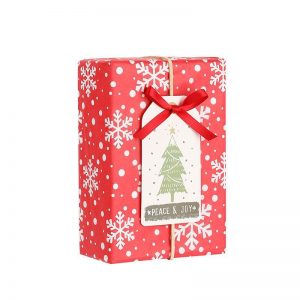Tear-resistant wrapping paper is designed to be more durable and resistant to tearing than regular wrapping paper. The science behind tear-resistant wrapping paper involves understanding the properties of materials and the engineering principles used to enhance its strength. Here are some key aspects of the science behind tear-resistant wrapping paper:
- Material Selection: Tear-resistant wrapping paper is made from materials that have high tensile strength and toughness. Common materials used include synthetic fibers like polypropylene or high-density polyethylene, which are known for their durability.
- Fiber Orientation: The arrangement and orientation of fibers in the paper play a crucial role in its tear resistance. In tear-resistant wrapping paper, the fibers are often aligned in a way that distributes the force of tearing more evenly, preventing the tear from propagating easily.
- Coating and Lamination: Some tear-resistant wrapping papers are coated with a thin layer of polymer or have multiple layers laminated together. This adds an extra barrier and strength to the paper, making it more difficult to tear.
- Cross-Linking: Cross-linking is a process where chemical bonds are formed between polymer chains, creating a three-dimensional network. This enhances the strength and tear resistance of the wrapping paper.
- Microstructural Engineering: Manufacturers may use microstructural engineering techniques to create patterns or microstructures within the paper that improve its tear resistance. This can include incorporating small reinforcements or adjusting the paper’s porosity.
- Testing and Quality Control: To ensure tear resistance, manufacturers subject their wrapping paper to rigorous testing. Tensile testing is commonly used to measure the force required to tear the paper, and quality control measures are employed to maintain consistent tear resistance across production batches.
- Environmental Considerations: As with any product, the environmental impact is a factor to consider. Some tear-resistant wrapping papers are designed to be more eco-friendly by using recycled materials or biodegradable options.
Tear-resistant wrapping paper is especially useful for wrapping gifts with sharp edges or irregular shapes, as it reduces the likelihood of accidental tearing during the wrapping process. However, it’s important to note that tear-resistant paper is not entirely tear-proof, and extreme force can still cause it to tear. Nevertheless, these scientific principles allow tear-resistant wrapping paper to offer improved durability compared to traditional wrapping paper, providing a better gift-wrapping experience for both givers and recipients.




















